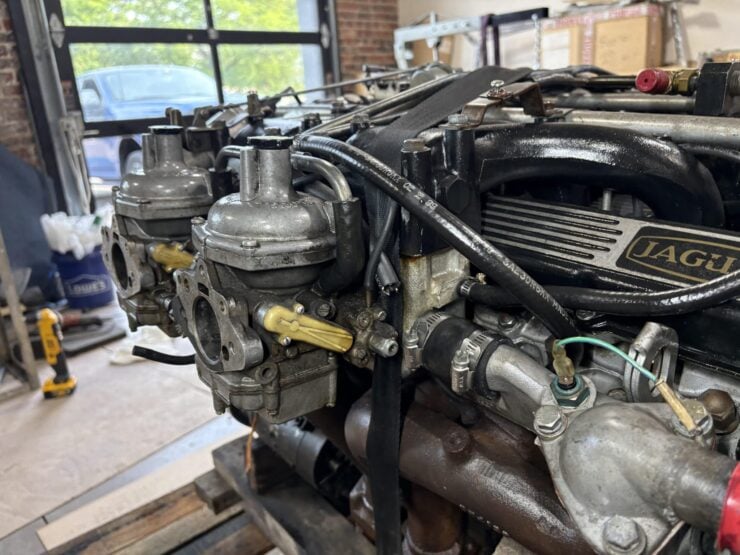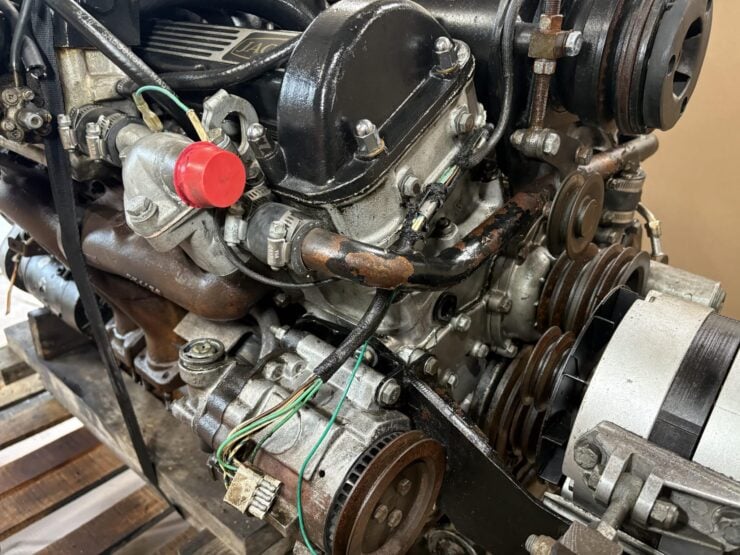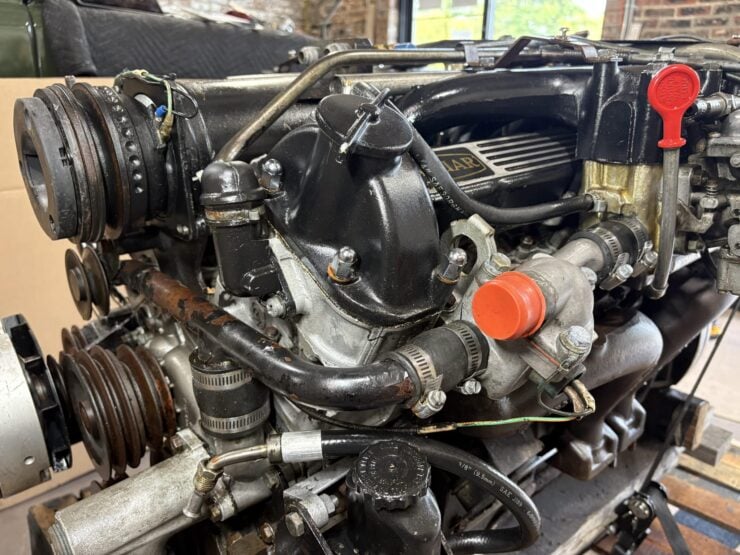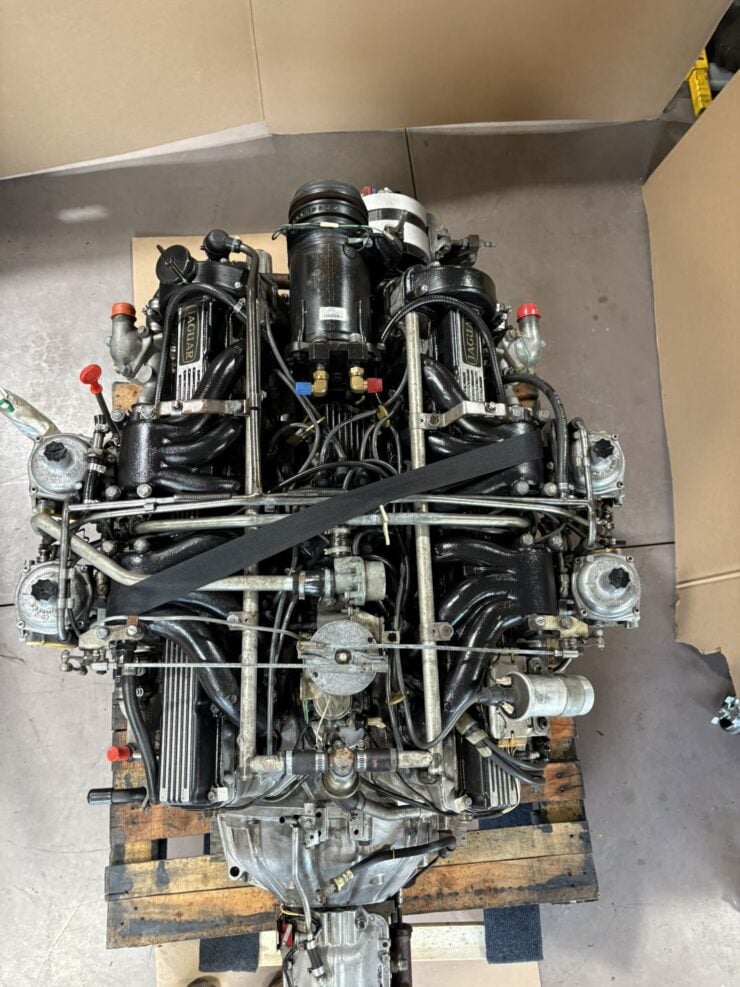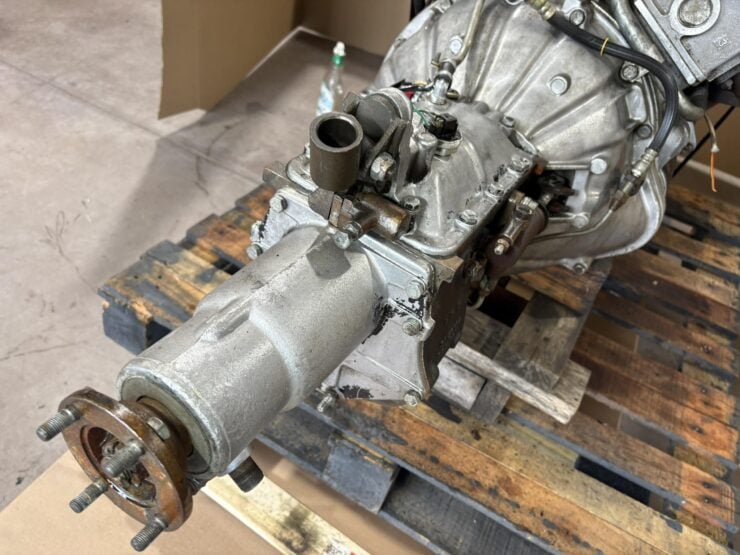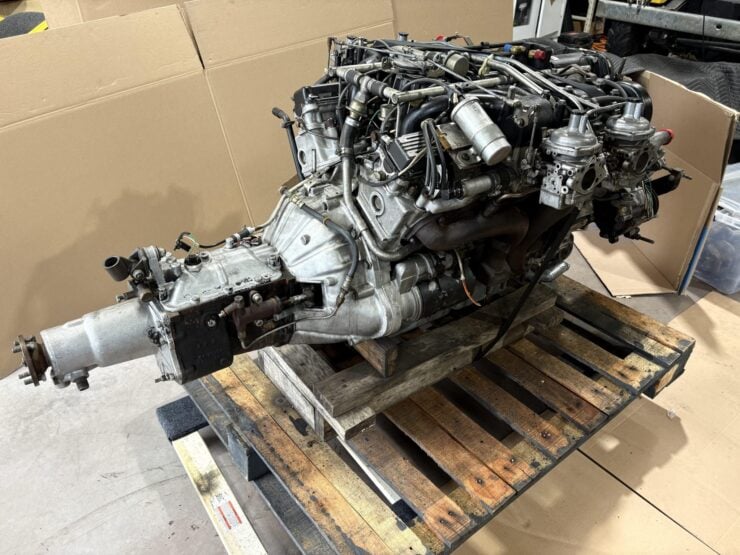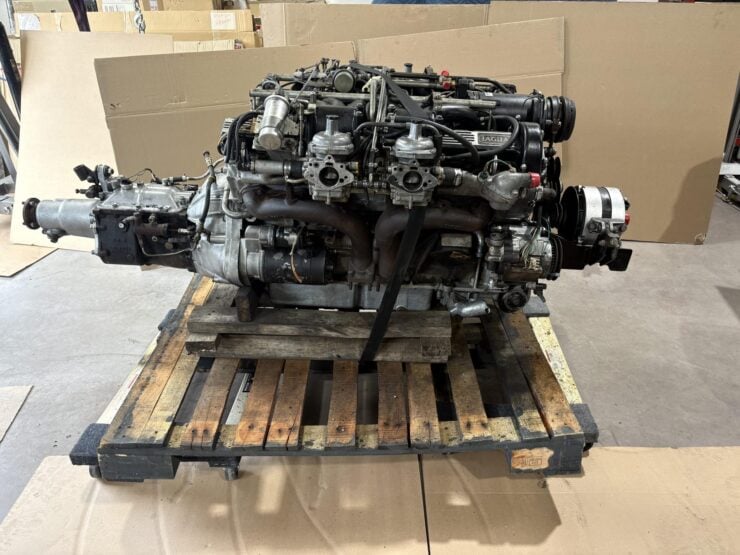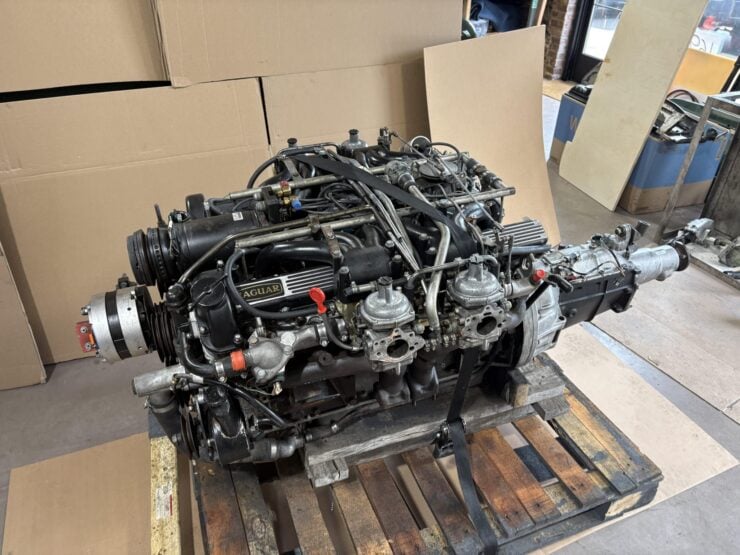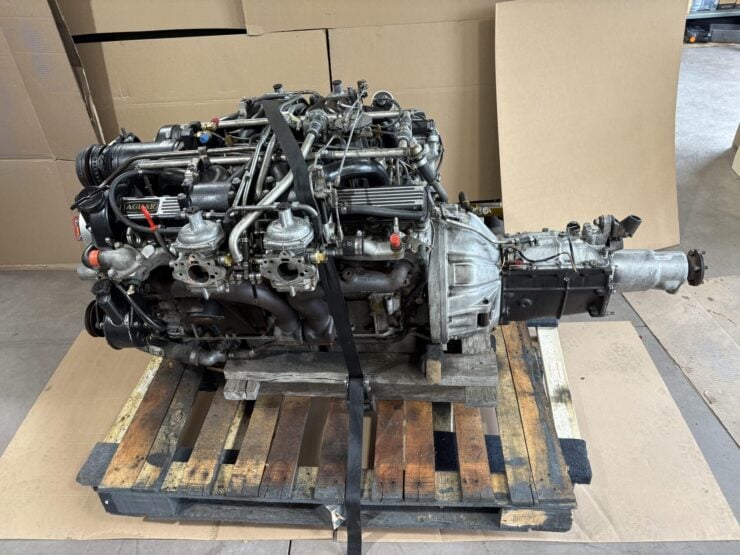This is the V12 engine from a Jaguar E-Type, it has a displacement of 5.3 liters and once fitted to a car it would be capable of up to 295 bhp and 295 lb ft of torque, depending on the state of tune.
The Jaguar V12 engine was first fitted to the Series III version of the Jaguar E-Type as a replacement for the Jaguar XK straight-six which could trace its lineage back to the late-1940s. The V12 offered Jaguar a boost in prestige, and perhaps more importantly, it gave E-Type owners bragging rights as there were no other V12-powered coupes anywhere near the same price point.
Above Video: This historic film shows Walter Hassan and Harry Mundy discussing the V12 engine when it was still new, they talk about the design of the engine and explain it all in some detail.
History Speedrun: The Jaguar V12
The story of the Jaguar V12 begins in the early 1950s, when Jaguar engineers Claude Baily and William Heynes, with later contributions from Walter Hassan and Harry Mundy. They first conceived of a twelve-cylinder engine as a successor to Jaguar’s remarkably successful XK straight-six.
The team’s initial designs, dating back to 1951, were for a racing engine that could extend Jaguar’s successes at Le Mans against increasingly fierce competition from the likes of Ferrari and Mercedes-Benz. The original concept was essentially two 2.5 liter XK straight-sixes joined at a 60º angle with a common crankcase and crankshaft.
Following Jaguar’s withdrawal from factory racing in 1957, the V12 project languished until the early 1960s when it was resurrected with renewed urgency. Bailey proposed various displacement options, ranging from a massive 7.6 liter version down to a more manageable 5.0 liter unit.
By 1962, he was instructed to begin prototype tooling and bench testing of a 5.0 liter design for use in both Jaguar’s two-door GT cars (at this time the E-Type) and its four-door luxury saloon cars.
The first formal “Instruction To Proceed” was issued in 1964, authorizing the construction of prototype V12 engines under the internal project code “XJ6” – not to be confused with the later saloon car. Engine number one was assembled in July 1964, marking the beginning of intensive development that would span nearly two decades.
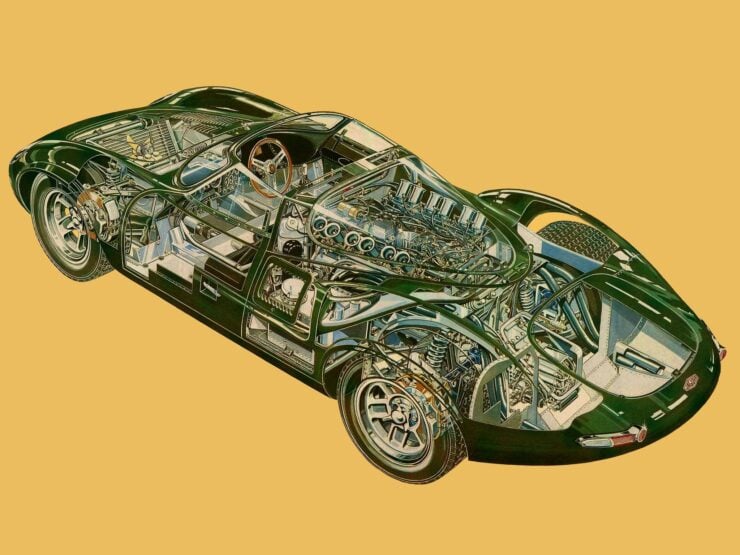

The Jaguar XJ13
The prototype V12 was designed primarily for the XJ13, Jaguar’s ambitious Le Mans racing project. This all-aluminum, quad-cam design featured fuel injection and was intended to restore Jaguar’s racing supremacy. Six complete prototype engines were built, with meticulous records kept of their development and testing.
However, by the time the XJ13 was completed, racing technology had advanced rapidly, particularly in chassis and aerodynamic design. The car was essentially obsolete before it turned a wheel in anger, and with Ford’s overwhelming commitment to Le Mans domination, Jaguar quietly abandoned the racing project in 1967.
Though the XJ13 never competed, its engine development provided the foundation for what would become the production V12.
After the XJ13 project’s cancellation, Jaguar’s engineering team, led by Chief Engineer William Heynes and including Walter Hassan and Harry Mundy, began transforming the complex racing engine into a practical road car powerplant. The twin-cam racing design proved too complicated, noisy, and expensive for production use.
The Switch From DOHC To SOHC
The breakthrough came when Walter Hassan, drawing on his experience with Coventry Climax engines, proposed some key simplifications: single overhead camshafts with flat cylinder heads and bowl-in-piston combustion chambers.
This design eliminated the complex twin-cam setup, reduced weight significantly, and improved mid-range performance – exactly what was needed for luxury road cars.
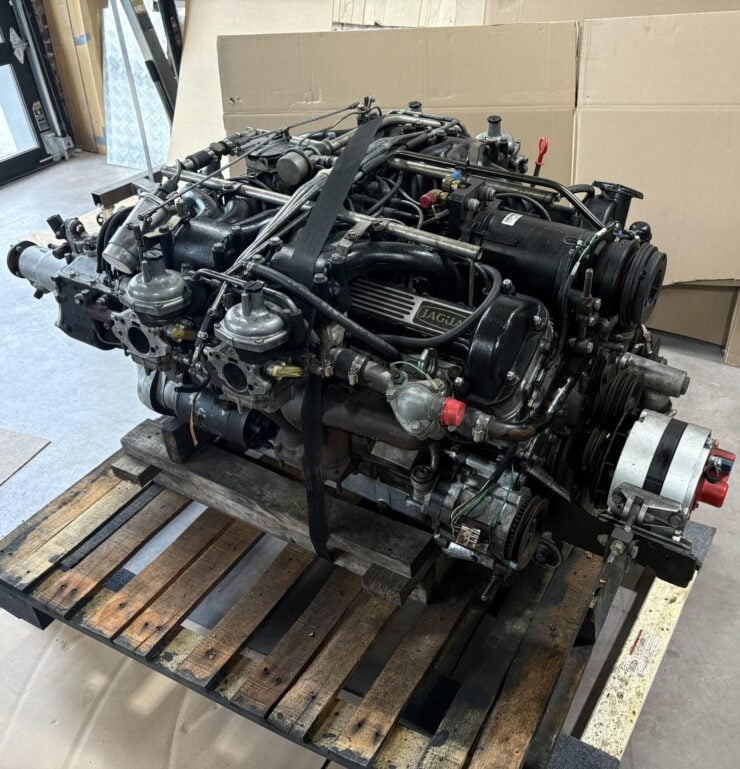


The production engine featured an all-aluminum block with removable wet steel cylinder liners, aluminum cylinder heads, and single overhead camshafts operating two valves per cylinder through bucket tappets. The displacement was increased to 5.3 liters (5,344cc) with a 90mm bore and 70mm stroke, creating an oversquare design that would become the engine’s signature configuration.
The Jaguar V12 made its production debut in 1971 in the Series III E-Type, making Jaguar the world’s first manufacturer to mass-produce a V12 engine into six figure volumes. The engine initially produced 272 bhp in European specification, equipped with four Zenith-Stromberg carburetors and Lucas OPUS electronic ignition – an advanced feature for its time.
The V12 quickly found its way into Jaguar’s luxury saloon lineup, powering the XJ12 from 1972 and establishing Jaguar as the only manufacturer offering V12-powered four-door luxury cars – a distinction it would maintain for 17 years until BMW introduced their M70 V12 in 1987.
The Victorious Return To Le Mans
While the production V12 achieved commercial success, its racing derivatives brought Jaguar back to Le Mans glory. Under Tom Walkinshaw Racing’s development, racing versions of the V12 grew to 7.0 liters and eventually 7.4 liters, producing up to 750 bhp.
These engines powered the XJR-9 to overall victory at Le Mans in 1988 and 1990, fulfilling the original racing aspirations conceived decades earlier.
The Jaguar V12’s 26-year production run concluded on April 17, 1997, with a total of 161,583 V12-powered cars built. The engine achieved its original goals of combining elegance with performance, and helped to further establish Jaguar as a preeminent luxury car marque during the 1970s and 1980s.
The Jaguar V12 Engine Shown Here
The engine you see here is a 5.3 liter version of the legendary Jaguar V12 that was sourced from a Jaguar E-Type Series III. It comes with a matching 4-speed all-synchro manual transmission, a rare option as most V12-powered Jaguars had slushboxes.
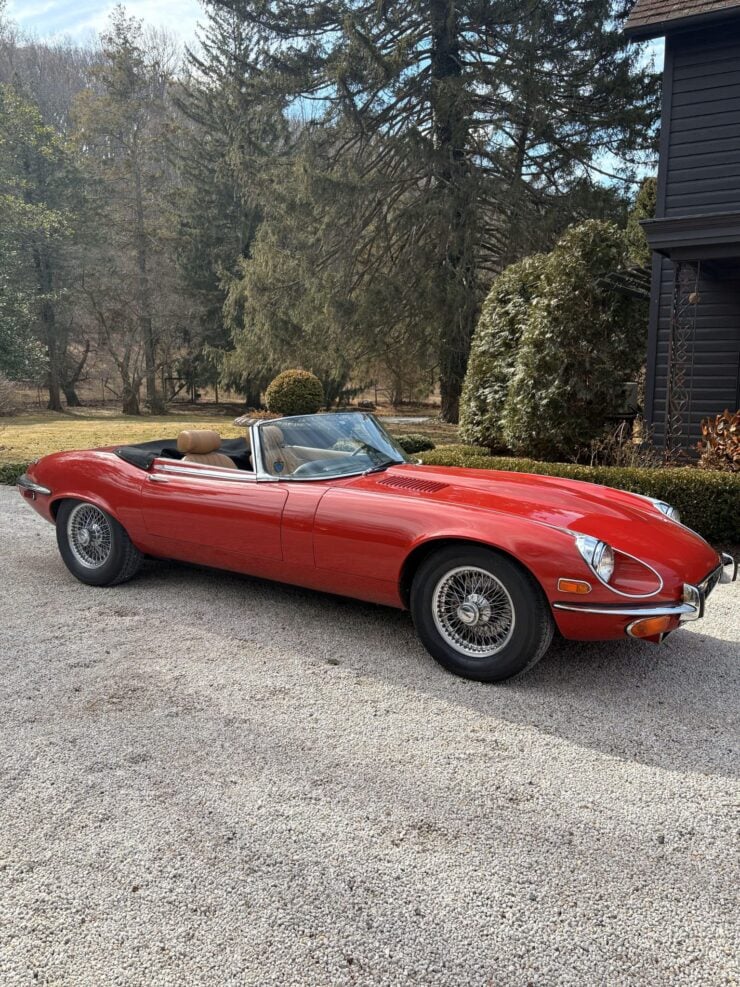


The car that this engine was fitted to was converted to electric power in 2025, for better or worse, and the engine and transmission are now unneeded so they’re being sold off. The engine comes with four Zenith-Stromberg carburetors and a Lucas Opus Mk 2 electronic ignition system, and the listing notes that there is a crack in the exhaust manifold.
It’s now being offered for sale out of Newtown, Pennsylvania with no reserve, and you can visit the listing here if you’d like to read more about it or place a bid.
Images courtesy of Bring a Trailer


